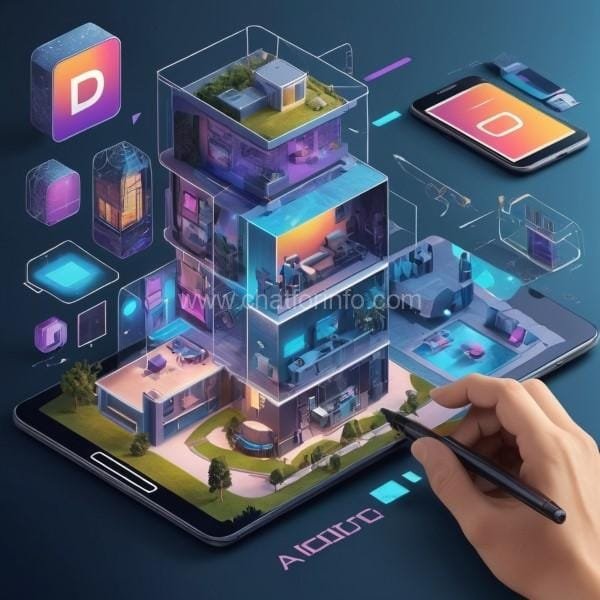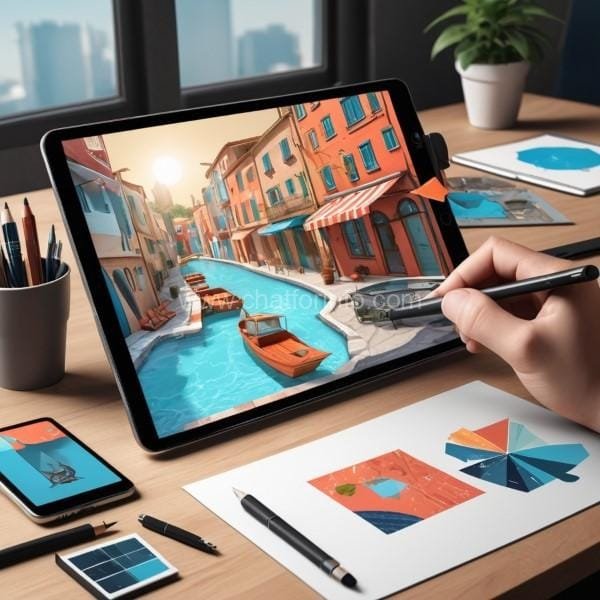Augmented Reality (AR) is one of the most exciting technologies shaping the modern world. By blending the digital and physical worlds, AR enhances our real-world experiences with interactive, computer-generated elements.

What is Augmented Reality?
Augmented Reality (AR) is a technology that overlays digital content—such as images, sounds, or information—onto the real world in real-time. Unlike Virtual Reality (VR), which creates a fully immersive virtual environment, AR adds digital elements to your existing surroundings, enhancing what you see, hear, or feel.
Examples of AR in Everyday Life:
- Snapchat Filters: The fun filters that add dog ears or hats to your selfies.
- Pokémon GO: A mobile game where players catch Pokémon that appear in real-world locations through their phone cameras.
- Google Maps Live View: Directions displayed on your phone’s screen, guiding you with arrows overlaid on the actual streets.
How Does Augmented Reality Work?
AR works by combining hardware and software to superimpose digital elements onto the real world. Here’s how it happens:
1. Hardware:
AR requires devices like smartphones, tablets, AR glasses, or headsets to function. These devices include:
- Cameras: To capture the real-world environment.
- Sensors: To detect motion and depth.
- Processors: To process data and render digital elements.
2. Software:
AR relies on advanced algorithms to analyze the environment and integrate digital content. Key technologies include:
- SLAM (Simultaneous Localization and Mapping): Helps the device understand its position in the physical world.
- Image Recognition: Identifies objects or images to trigger AR content.
- 3D Mapping: Builds a digital map of the surrounding area to place AR objects accurately.
3. Display:
The processed AR content is displayed on the device screen or through AR glasses. The user sees the digital elements as part of the real-world view.

Applications of Augmented Reality
AR is transforming various industries by providing interactive and immersive experiences.
1. Education
- Interactive Learning: Apps like Google Expeditions allow students to explore the human body or historical sites through AR.
- Practical Demonstrations: Science experiments can be visualized safely using AR.
2. Healthcare
- Surgical Assistance: Surgeons use AR to visualize organs or blood vessels during procedures.
- Medical Training: Trainees practice surgeries using AR simulations.
3. Retail
- Virtual Try-Ons: Customers can see how clothes, glasses, or makeup look on them using AR apps.
- Furniture Placement: IKEA Place app lets users visualize furniture in their rooms before buying.
4. Gaming and Entertainment
- AR enhances the gaming experience, making it more engaging and interactive.
5. Real Estate
- Virtual tours of properties allow buyers to explore homes without physically visiting them.

How Does AR Enhance Real Life?
AR improves convenience, learning, and efficiency in everyday activities.
- Increased Engagement: Interactive learning and shopping experiences.
- Time-Saving: Visualizing products or navigating spaces more effectively.
- Enhanced Entertainment: More immersive and exciting games and movies.
Examples of AR Technologies
ARKit by Apple: Powers AR apps for iPhones.
ARCore by Google: Brings AR capabilities to Android devices.
Microsoft HoloLens: AR glasses for professional applications.

Conclusion
Augmented Reality bridges the gap between the digital and physical worlds, offering limitless possibilities for innovation. Whether it’s helping students learn, aiding surgeons, or simply making games more fun, AR is shaping the future.
At Chatforinfo, we explore these advancements to keep you informed and inspired. What AR application excites you the most? Let us know in the comments!